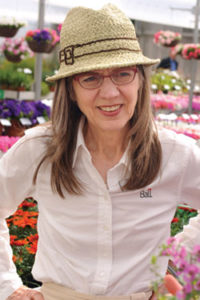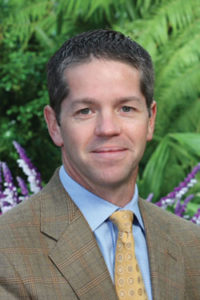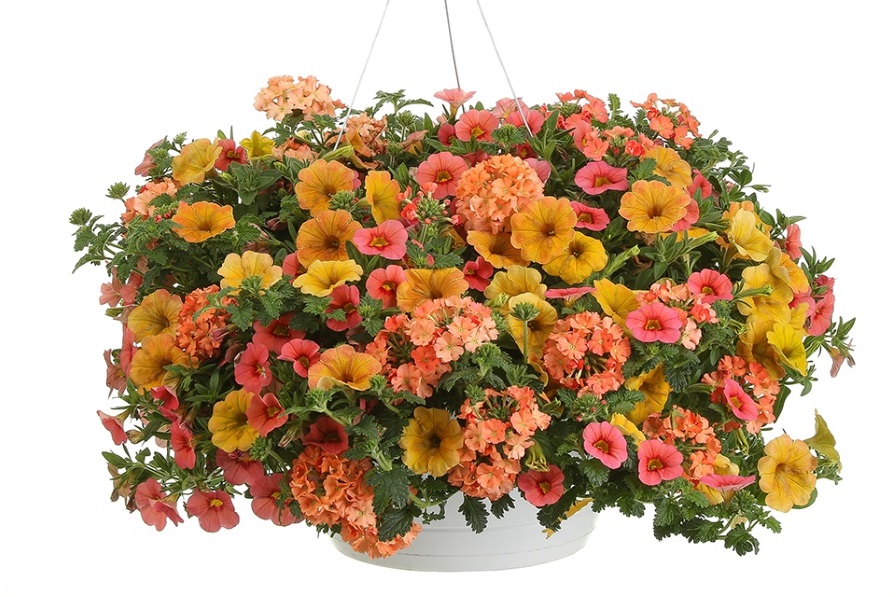Seed Your Future Aims to Inspire Careers in Plants

Anna Ball, Ball Horticultural Company
Greenhouse growers and owners are aging and finding it challenging to attract enough qualified employees. As retirement looms, they find themselves asking, “Who will care when I’m not there?” Who will take the reins and have the expertise to provide the technology, science, art and business acumen necessary to meet the rapidly increasing demand for ornamentals, fruits, vegetables, nuts, and herbs in the face of the changing global environment?
Plant blindness, defined as ‘‘the inability to see or notice the plants in one’s own environment, leading to the inability to recognize the importance of plants in the biosphere and in human affairs,’’ is an epidemic. Recent studies find that along with more than 53 hours per week in screen time and only minimal time outdoors, youth perception of plants is increasingly negative and has reduced their interaction with plants, and subsequently their interest in careers involving plants. Hence, the pursuit of training and education for horticulture careers is declining. Sadly, many university horticulture programs are shrinking or collapsing altogether. With all of these factors at play, we are left with the questions: Who will be the next generation of horticulturists? Who will care when I’m not there?
Opportunities Abound, Awareness of Them Lacking
According to 2014 statistics, only 61% of the expected 57,900 average annual openings available in the agriculture industry are likely to be filled. Why aren’t people flocking to pursue careers working with plants, when the current U.S unemployment rate is 4.7%, an estimated 58% of graduating college seniors cannot find jobs in their chosen field, and horticulture jobs are plentiful?
“There have never been so many opportunities to join the horticulture field,” says Anna Ball, CEO of Ball Horticultural Company. “But awareness of these opportunities is at an all-time low.”

Paul Redman, Longwood Gardens
Ball and Paul Redman of Longwood Gardens are co-chairs of Seed Your Future, the new movement to promote horticulture and inspire more people to pursue careers working with plants. Seed Your Future is a coalition of more than 150 partners across the horticulture industry who are working together to make a long-term impact and ensure a pipeline of qualified talent for years to come.
We Need to Tell a Better Story
There is good news. Seed Your Future conducted three phases of research to discover why the perception of horticulture is low and why young people are not pursuing careers in the industry. It seems we have an awareness issue, not an aversion to the industry. Frankly, we are not telling our stories in ways that resonate today.
We conducted focus groups with middle-schoolers, parents, teachers, and guidance counselors, and the results were encouraging. Few understood the jobs available in growing, breeding, distribution, science, technology, art, design, and business in the industry. But once participants learned about the diverse opportunities in horticulture, they were very interested. And significantly, not one middle-schooler had even heard the term “horticulture.” They told us we need to use simple language they can understand, and inspiring, relatable imagery.
Young people told us that titles such as “plantologist” and “plant specialist” resonate more than “horticulturist.” We learned youth want jobs where they can make an impact on the world, be creative, and save the environment.
We also learned that youth and their families have growing interest in movements such as farm-to-table and field-to-vase. What we haven’t done is connect those movements to career paths. We’ve not told the stories well enough to inspire the next generation and their families.
Educational Opportunities Will Tell a Story That Connects
Seed Your Future along with our partners, including Scholastic, is launching a proactive education, marketing, and national public relations campaign. Most importantly, we are not creating all these materials ourselves. We know there are already some impressive programs out there across segments of the industry. We’ll help promote them. We hope to be a clearinghouse and to create only where gaps exist.
Who will care when you’re not there? The answer lies in helping to change the perception of horticulture and using contemporary new language to tell our stories. As one student said in our research, “Why don’t you just say that it’s all about the plants? Plants are everything; plants are life!”









